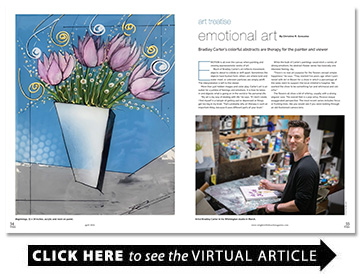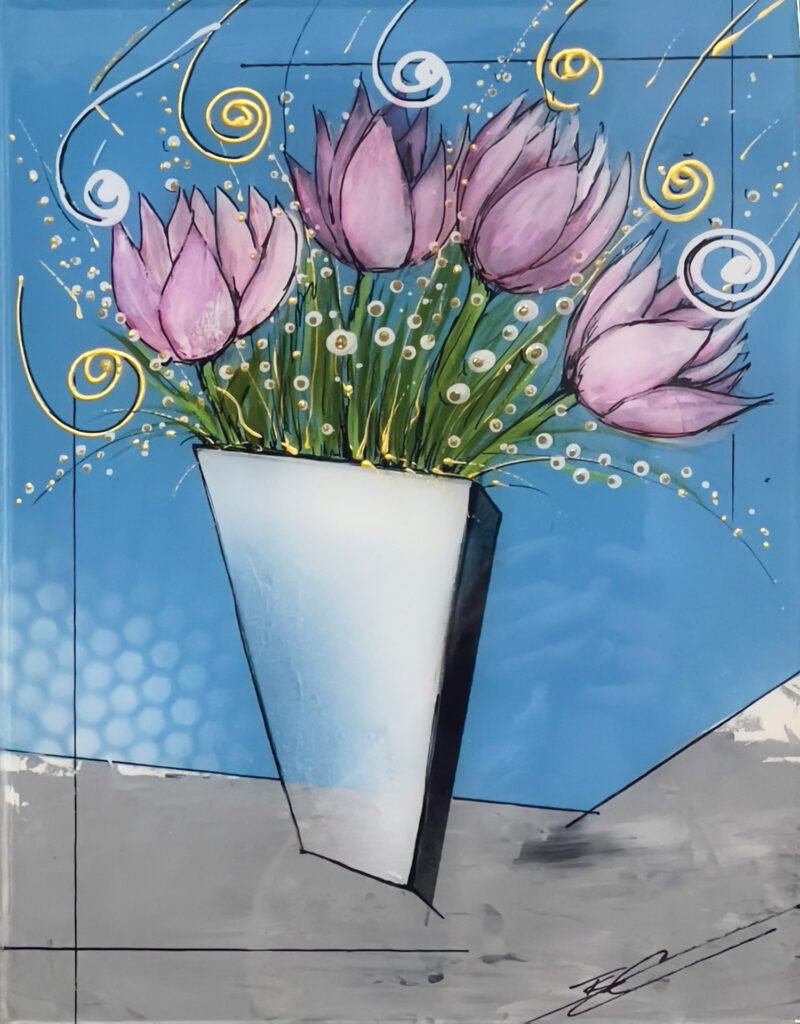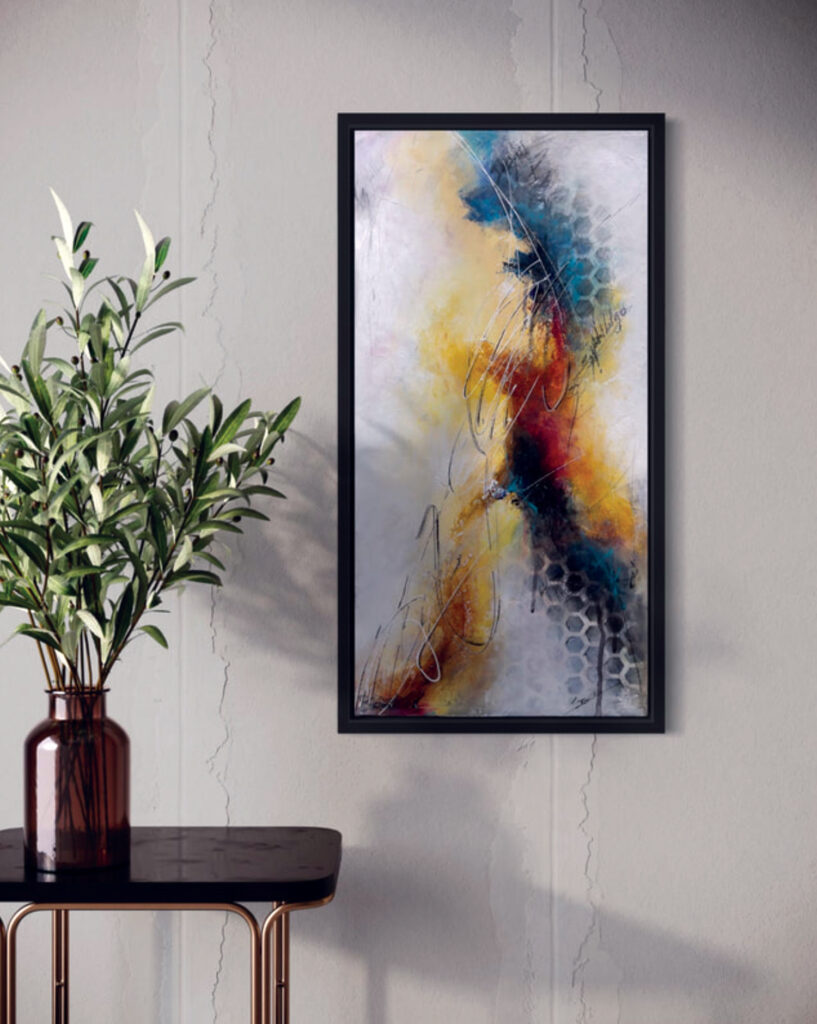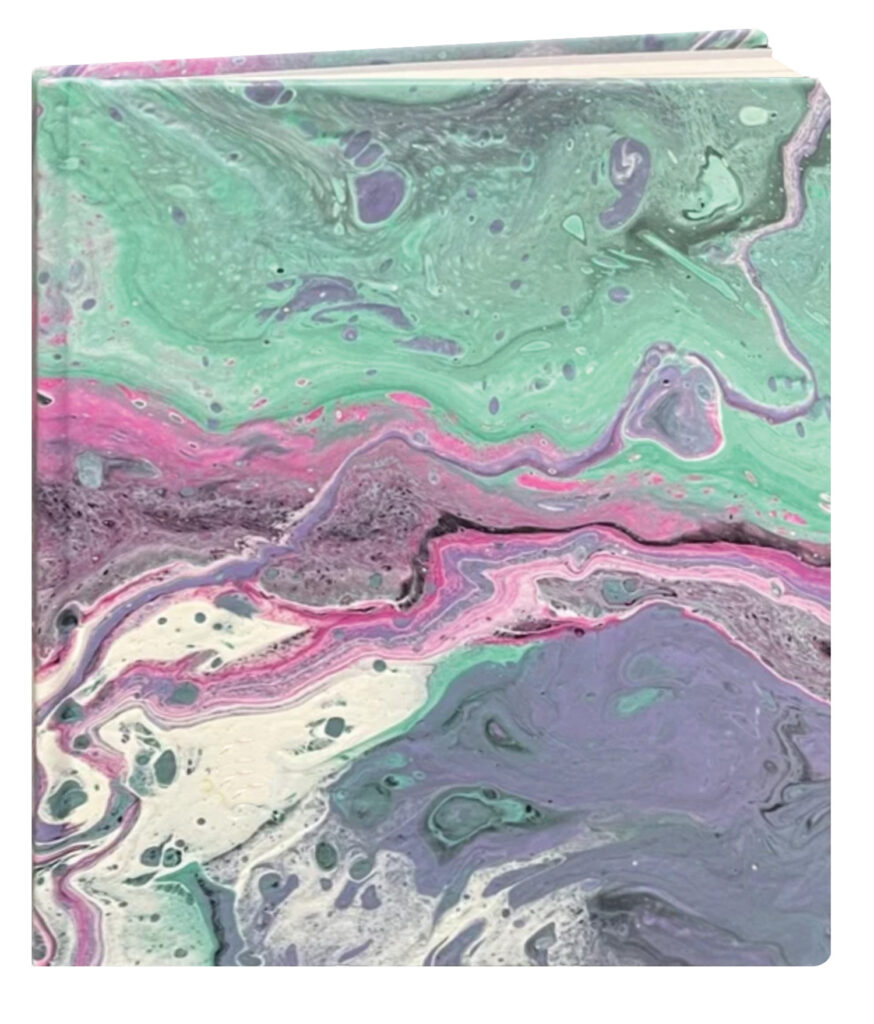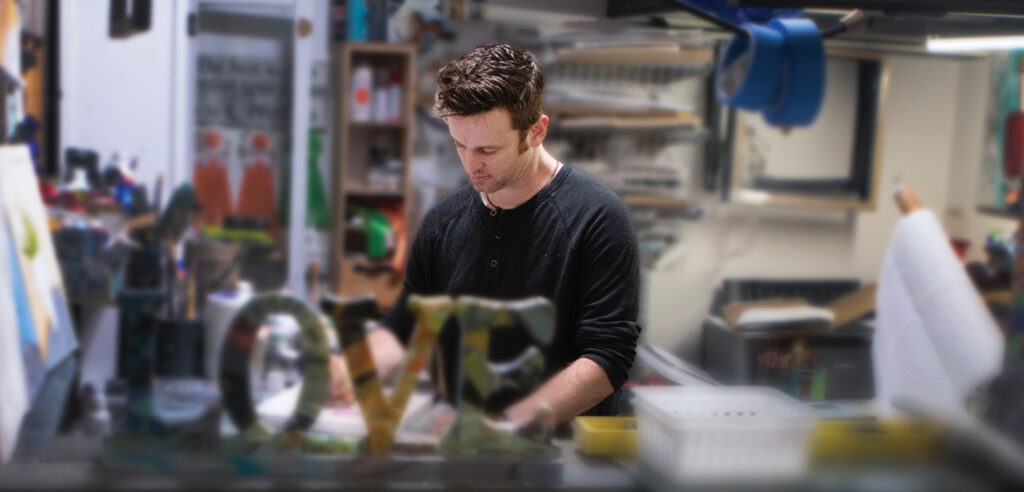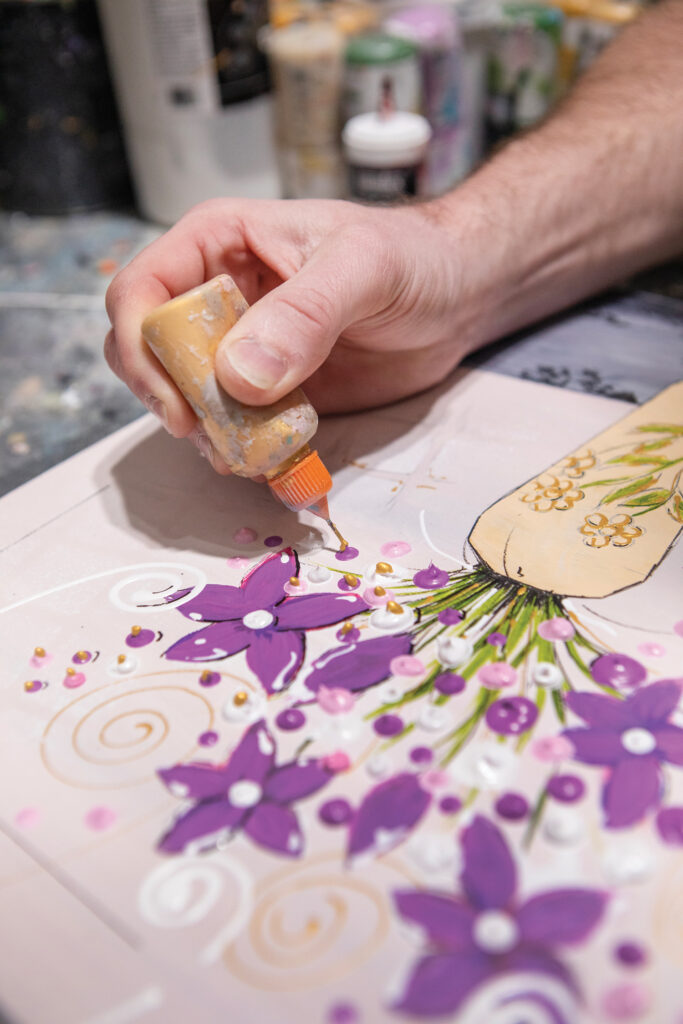Emotional Art
Bradley Carter’s colorful abstracts are therapy for the painter and viewer
BY Christine R. Gonzalez
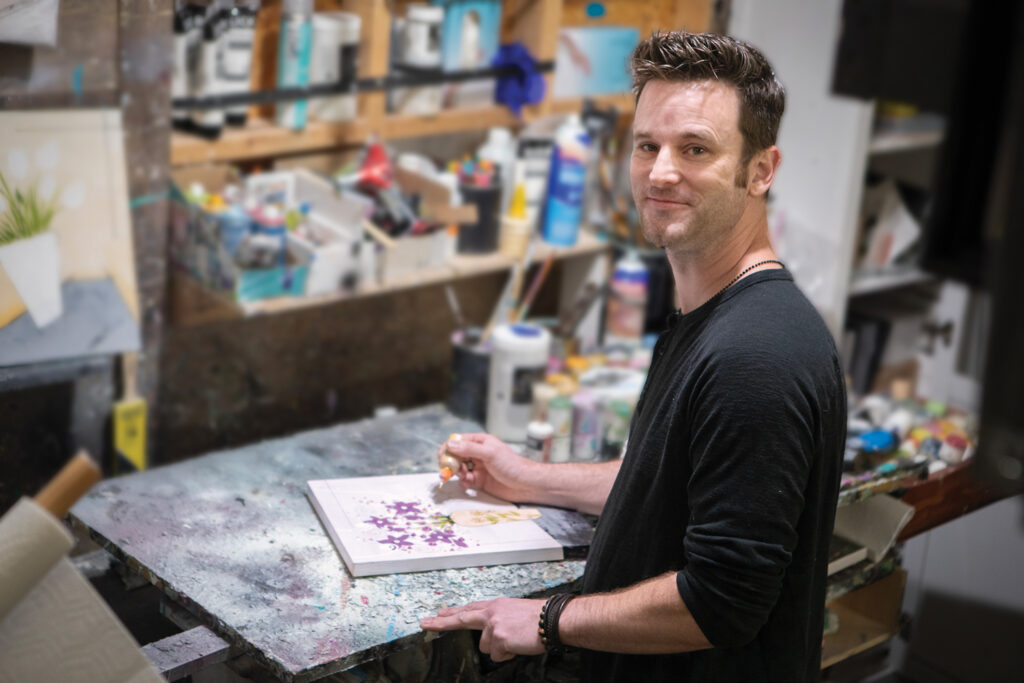
Emotion is all over the canvas when painting and viewing expressionistic works of art.
Much of Bradley Carter’s art reflects movement, objects about to collide or drift apart. Sometimes the objects have human form, others are where land and water meet, or unknown particles are simply adrift. The interpretation is left to the viewer.
More than just hidden images and color play, Carter’s art is an outlet for a jumble of feelings and emotions. It is how he takes in and digests what is going on in the world or his personal life.
“My art is my way of dealing with life,” he says. “If I don’t create, I find myself in a tailspin of getting sad or depressed or things get too big in my brain. That’s probably why art therapy is such an important thing, because it uses different parts of your brain.”
While the bulk of Carter’s paintings could elicit a variety of strong emotions, his abstract flower series has basically one intended feeling. Joy.
“There’s no real art purpose for the flowers except simple happiness,” he says. “They started five years ago when I partnered with Art in Bloom for a show in which a percentage of the sales went to support the local children’s hospital. We wanted the show to be something fun and whimsical and colorful.”
The flowers all show a bit of whimsy, usually with a strong angular vase. The overall feel is a pop-artsy, Picasso-esque exaggerated perspective. The most recent series includes focus or framing lines, like you would see if you were looking through an old-fashioned camera lens.
Carter says he paints about 90 percent of his works flat, like Jackson Pollock. He is influenced by 1950s-era abstract expressionist artists such as Pollock, Willem de Kooning and Mark Rothko.
“I just love stuff from that era. It was called action painting, the color-filled painting,” he explains.
Like Pollock, Carter enjoys adding lines or script that float down onto the canvas. The lines can look like a signature of sorts, or even foreign or Japanese writing.
He might spend one to three weeks on a painting, and normally has several works in progress at a time, but the lines are added as the finishing touch, and take only a matter of seconds.
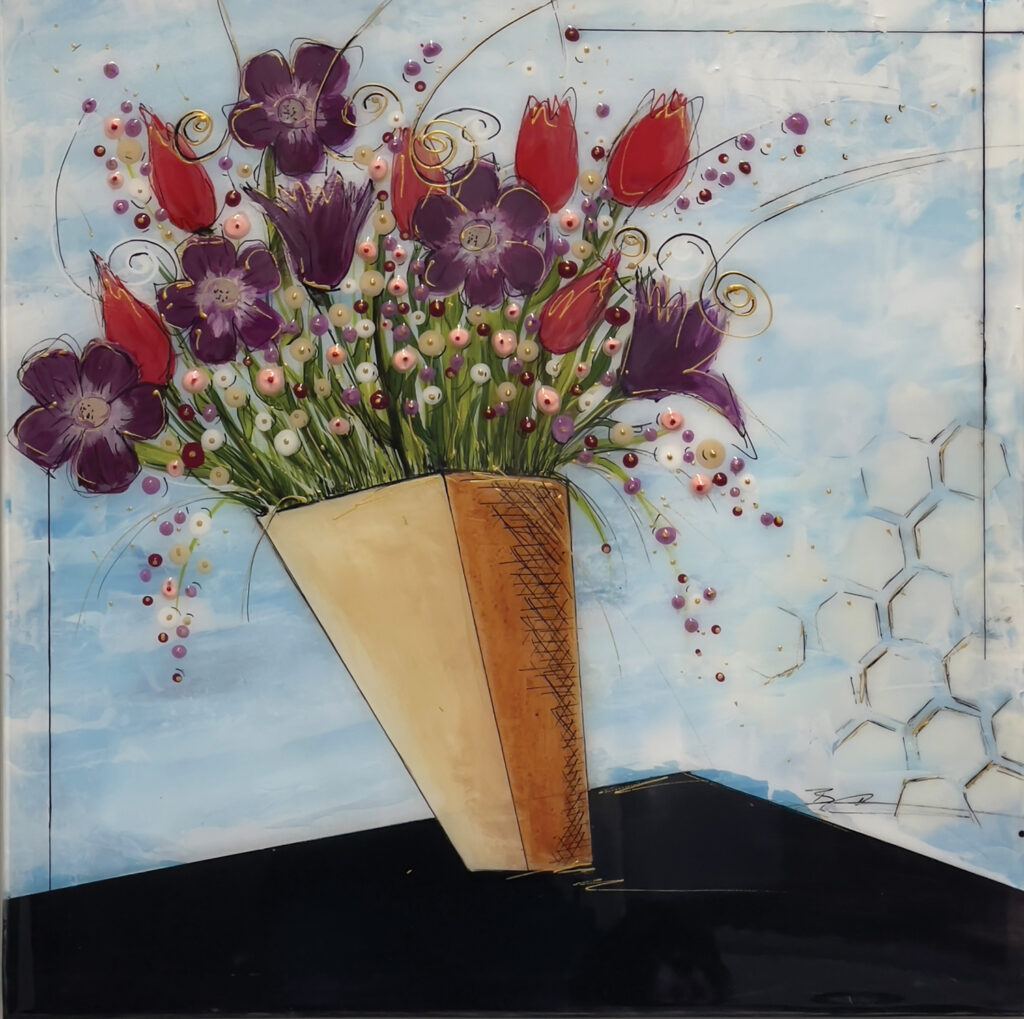
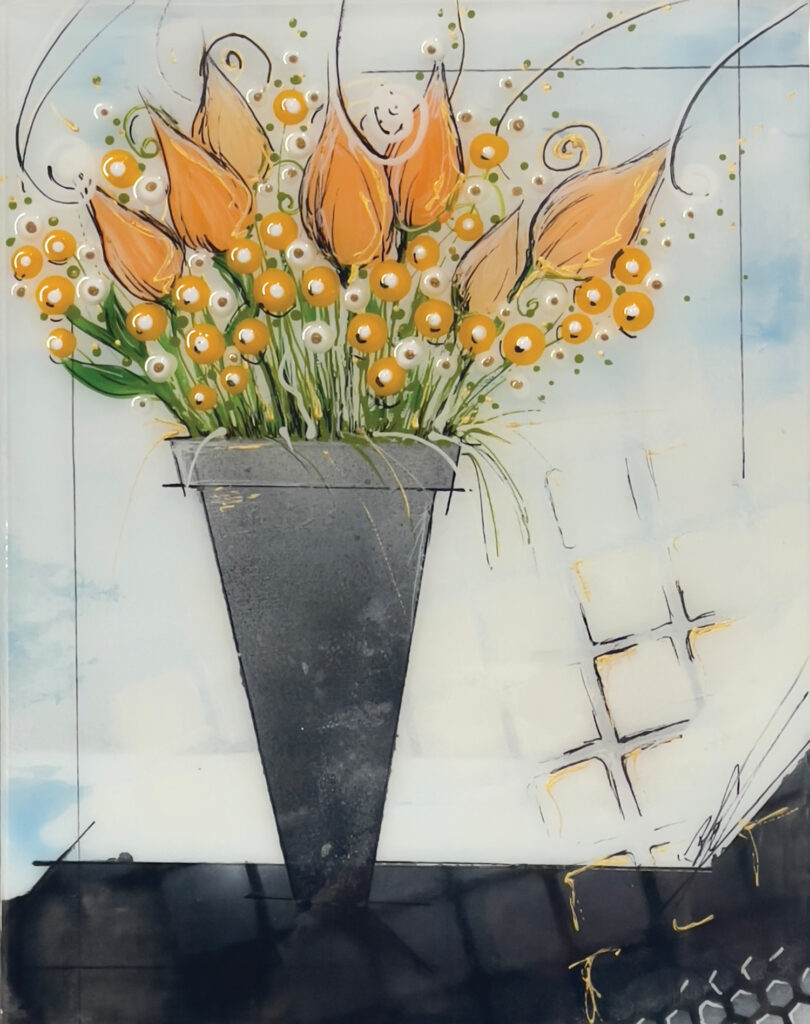
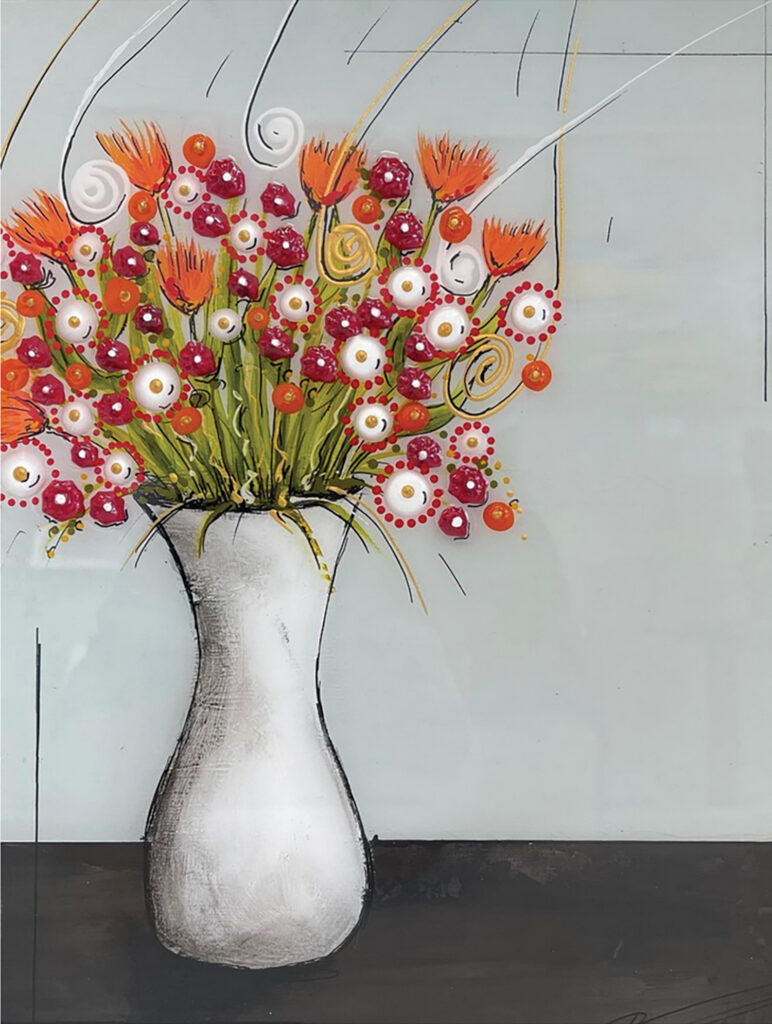
“The background work can take a week to three, but the lines take me 15 seconds at the very end. When I first started, I used a stick just like Pollock did. Now I use squirt bottles with different sized tips to be a little more precise,” he says.
Carter listens to a variety of music while painting but likes classical music while scrolling the paint lines onto the canvas. He likens the movement of dropping the paint to how an orchestra conductor waves his hands through the air.
“I’m just scrolling across the canvas at a different angle, and it looks like a script or a signature. It can look like Japanese writing, it has all those same tendencies, but it (the paint) is just hanging in the air, and it falls on the canvas,” he says.
It sounds simple, but Carter says the paint needs to fall “just right.” A few times he’s had to wash the script off and start over (the rinsing does not damage the already dry foundation work). The aim is for the lines to appear natural.
“If you try to force those lines to be something, then it looks forced. It needs to be accidental,” he says. “They need to look like they fell, and the canvas captured them. You have to have the right fluidity of the paint so it won’t be too thick or too thin. The right fluidity makes it scroll across the painting.”
Carter doesn’t plan out his compositions. Say You appears to feature a silhouette of a female, but it wasn’t intended that way.
“That’s just the way it came out. Sometimes your subconscious really influences everything you do,” he says.
Carter moved to Wilmington from Virginia in 2007. He has served as president of the Wilmington Art Association and has managed art shows in the area, such as the 2023 Art in the Arboretum show. He loves community work, but he has recently stepped back to focus on his own paintings.
He developed a unique process of painting on glass, removing the painting while it’s still tacky on the glass-facing side and wrapping the art around a book. It adheres to the book binding as it continues drying, creating a functional 3D piece of art.
“The books are a good price point. I’ve sold them to kids at school, people on Broadway, comic book artists,” he says. “People use them as cookbooks, baby books, or a plain old diary.”
The books sell for about $35 and are available at Art in Bloom and Eclipse.
Carter’s art has appeared in TV shows and movies such as Secrets Lies, Good Behavior, Scream 5, Hightown and Our Kind of People. He says production assistants will walk into Art in Bloom and say, “I want this and this one.”
“It’s about being in the right place at the right time. The movie studios, when they’re open, have a ripple effect on the community. They will rent the art and I get money, the gallery gets money, it helps everybody,” he says.
He does not raise the price on any art that has appeared on television.
“But it sure does sell easier when you can say, ‘This has been on TV,’” he says.
For more information about art shows and creations available to purchase, see BradleyCarterArt.com.
